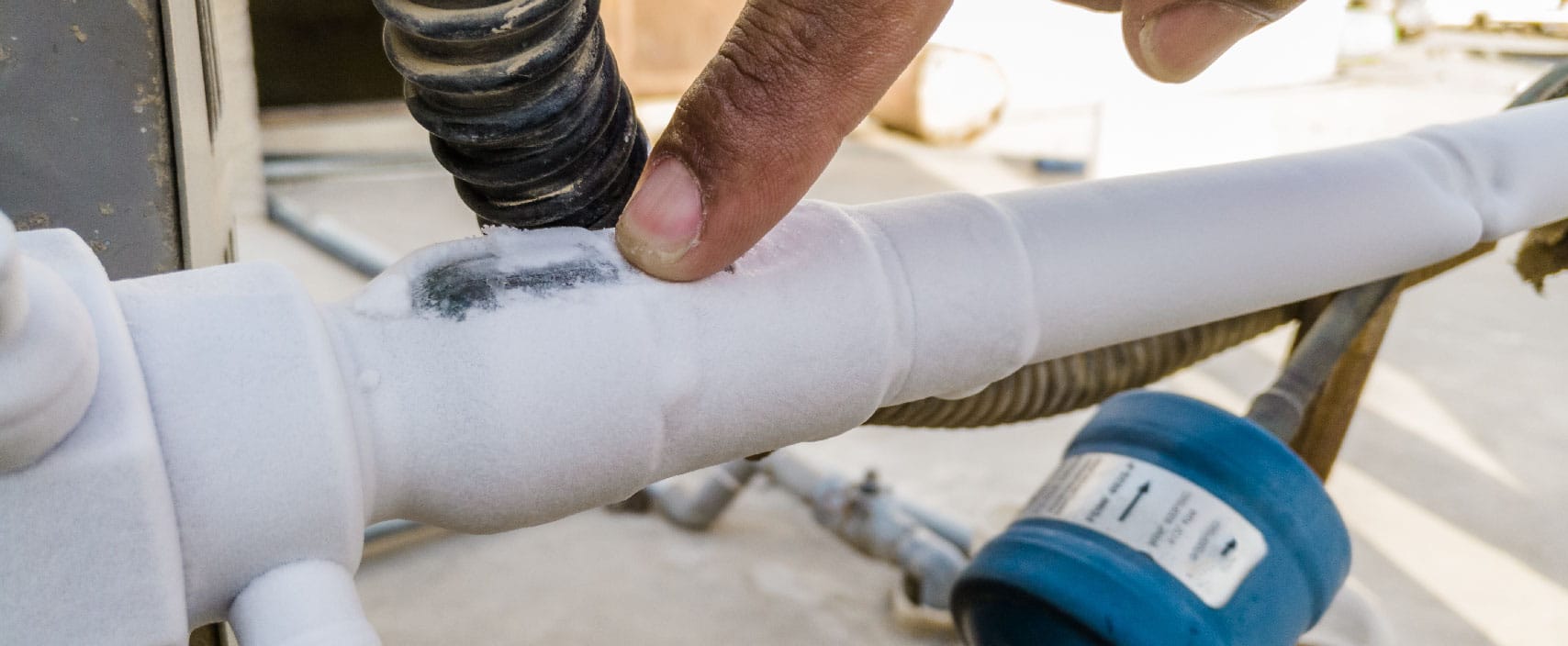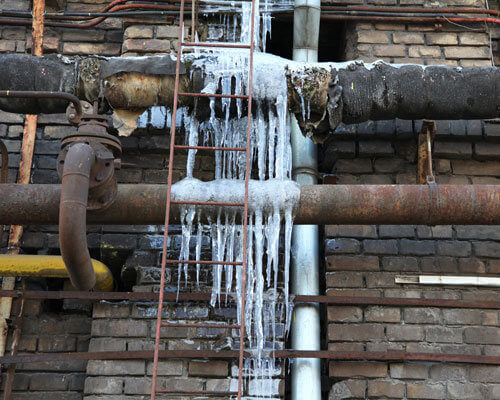What to Deal With a Frozen AC Pipe - Essential Steps for Recovery
What to Deal With a Frozen AC Pipe - Essential Steps for Recovery
Blog Article
This post down below involving What Do I Do If My AC Pipe Is Frozen is particularly compelling. Don't miss it.

Introduction
Finding that your air conditioning pipe is frozen can be concerning, particularly during hot summer months when you depend on your air conditioner one of the most. Comprehending what to do in such a circumstance is essential to prevent further damages to your cooling system and guarantee your comfort inside.
Comprehending the Causes
Numerous elements can contribute to the cold of an air conditioning pipeline. Understanding these causes can aid you deal with the concern effectively.
Lack of Airflow
One common root cause of an icy AC pipe is inadequate air flow. When the air movement over the evaporator coil is limited, it can create the coil to go down below freezing temperature level, leading to ice development on the pipeline.
Low Refrigerant Levels
Not enough cooling agent levels in your air conditioner system can also result in a frozen pipe. Reduced cooling agent levels can trigger the pressure in the system to drop, resulting in the freezing of moisture on the evaporator coil.
Cold Weather Conditions
In cooler climates, freezing temperature levels outside can contribute to the cold of air conditioning pipelines. If your air conditioner device is not properly insulated or if there are leaks in the ductwork, cold air can infiltrate the system, causing the pipe to freeze.
Dirty Air Filters
Unclean or clogged air filters can restrict air movement in your air conditioner system, leading to different concerns, including a frozen pipe. It's important to change or cleanse your air filters on a regular basis to make sure proper air movement and protect against ice accumulation.
Signs of a Frozen Air Conditioner Pipe
Acknowledging the indicators of a frozen AC pipe is essential for prompt action.
Minimized Airflow
If you observe a significant decline in airflow from your vents, it can show an icy pipeline.
Ice Buildup on the Pipe
Visible ice buildup on the refrigerant line or the evaporator coil is a clear indication of an icy air conditioning pipeline.
Odd Sounds from the Unit
Unusual sounds, such as hissing or bubbling, coming from your air conditioner device can indicate that there's ice present on the pipeline.
Immediate Actions to Take
When confronted with a frozen AC pipeline, it's important to act rapidly to stop additional damage to your air conditioning system.
Turning off the AC
The primary step is to turn off your ac system to stop the system from running and intensifying the problem.
Looking for Blockages
Examine the location around the interior unit for any type of blockages that might be blocking airflow, such as furniture or curtains.
Thawing the Pipe
You can make use of gentle techniques like positioning towels taken in cozy water around the icy pipeline to help thaw it gradually.
Preventive Measures
Taking preventive measures can assist avoid future events of a frozen a/c pipe.
Regular Maintenance Checks
Schedule regular upkeep get in touch with a specialist HVAC professional to make sure that your a/c system is running efficiently.
Changing Air Filters
Regularly replace or clean your air filters to stop air flow restrictions and keep optimal efficiency.
Protecting Exposed Pipes
If your AC pipes are revealed to chilly temperature levels, take into consideration insulating them to stop cold during winter months.
Looking For Professional Help
If DIY techniques stop working to resolve the concern or if you're not sure regarding exactly how to proceed, it's finest to seek aid from a qualified HVAC service technician.
When DIY Methods Fail
If your efforts to thaw the pipe or address various other issues are not successful, it's time to contact a specialist.
Significance of Hiring a Professional HVAC Technician
A licensed HVAC technician has the know-how and devices necessary to diagnose and repair problems with your a/c system safely and efficiently.
Final thought
Managing an icy AC pipeline can be a frustrating experience, but recognizing exactly how to respond can aid reduce damage and recover comfort to your home. By comprehending the causes, recognizing the indicators, and taking timely activity, you can efficiently attend to the concern and prevent future occurrences.
Frozen AC Line: Why It Happens & What To Do About It
A frozen AC line can be a rather peculiar sight in a place like Phoenix, Arizona where nothing ever freezes. In this post, we’ll discuss what makes an air conditioner line frozen – and what you can do about it.
Dirty Air Filters
Did you know that you should be cleaning or replacing your air filters on a monthly basis? Failing to do this can result in airflow issues that, in turn, cause your evaporator coils and lines to freeze over. You’ll notice a buildup of ice on both components, although the buildup on your pipes will, of course, be more evident unless you open your air condition up to reveal the coils.
What To Do About It
Give your air filter a good cleaning if it’s reusable. If not, replace the filter outright. Next, switch your air conditioner’s fan setting on and leave it there for 2-3 hours. This will draw warm air in, helping to thaw your evaporator coil. You can also check out this article for some tips on cleaning the coils themselves if you’d like to speed the process up. Before you switch the unit back to its normal state, make sure the supply vents are completely unobstructed and free of dust or other debris.
If you keep having this issue even after replacing your filters regularly, contact a local HVAC repair company and have them inspect your evaporator coil, ductwork, and any other components that may be at fault. If you live in the Phoenix, Arizona area, give American Home Water and Air a call.
Low Refrigerant Levels/Leakage
What To Do About It
Contrary to what air conditioner “recharge” companies often tell their clients about refrigerant, it should never need to be simply refilled. You see, refrigerant runs in what experts refer to as a “closed loop.” Refrigerant really shouldn’t be leaving that loop. If it is, you’ve got a leak.
Paying someone to come and pump more refrigerant into your system (aka “recharge” it) isn’t the solution. Doing that will simply kick the can down the road. Besides, refrigerant leaks can be harmful to the environment and people in your home.
Rather, you need to take care of the leak with the help of a technician. Check out this article for some more information about dealing with air conditioners that are leaking refrigerant. Before you contact a technician, switch your thermostat to the off position. Then, switch the fan setting on and let it run for 2-3 hours so the unit can thaw.
Improper Temperature Setting
Improper temperature settings can also cause a drop in your air conditioner’s pressure. What many people don’t realize is that air conditioners are actually designed to run when temperatures have fallen above roughly 60 degrees Fahrenheit. If you run the unit when it’s cold outside, you’ll run into many issues, including frozen components.

Do you appreciate reading up on Why Is Ice On My Outside Air Conditione? Make a remark further down. We will be interested to know your responses about this write up. In hopes to see you back again in the near future. Do you know about somebody who is fascinated about What Causes AC Pipes To Freeze?? Why not promote it. Thanks for your time. Visit again soon.
Click Here Report this page